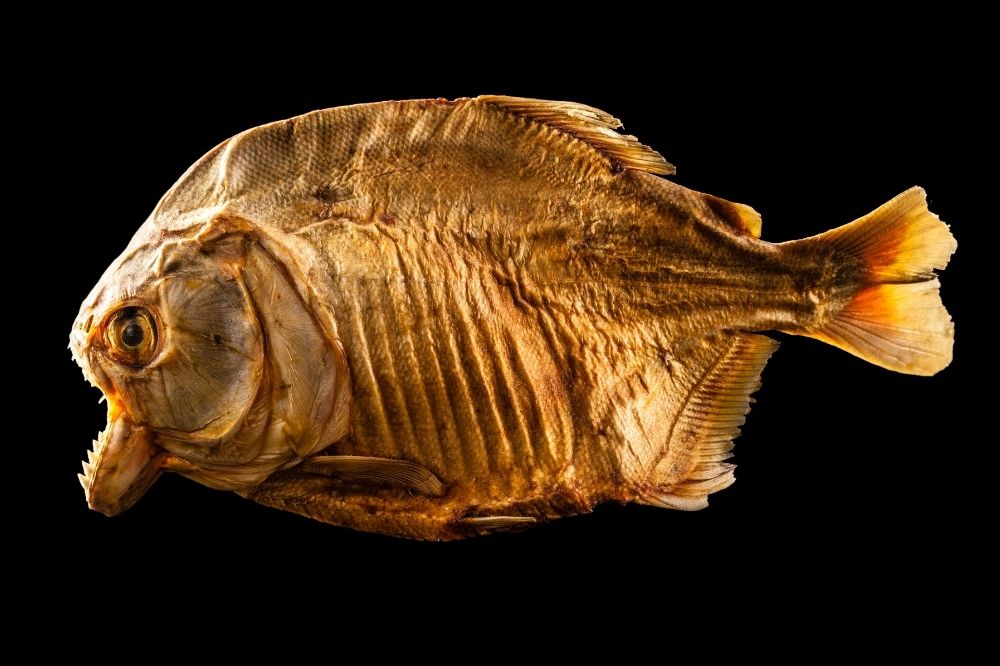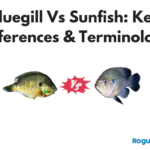If you have ever gone fishing, you know how a proud moment it is to catch your biggest fish yet. Sometimes, you can catch rarities, or you just want to commemorate the moment. What you can do is keep the fish and mount it to display it in your home. Here we’ll learn how to harness your prize and how much it costs to taxidermy a fish.
The process of preserving a dead animal such as a fish to place on your wall or use as a keepsake is called taxidermy. You may be wondering what this is, and how much it costs to do. Luckily, we are here to answer any questions you may have about having a fish taxidermied. But first, let’s have a look at what taxidermy is and how it works.

What is taxidermy?
Taxidermy is the particular art of preserving an animal’s body to mount, stuff, or display. In many cases, animals go through the process of taxidermy, which is often used to stuff animals for museums and study and is often used to display hunted or caught animals that have died.
The term taxidermy refers to both the process of preserving an animal and also the finished result. It is an extremely detailed and long process done by professional taxidermists. These taxidermists will work to skin the animal, preserve it with chemicals, and tan the skin before mounting this on a mannequin.
They can also use clay and glass eyes to recreate an animal’s natural shape and look, reforming their features to their former glory. Taxidermy has long been considered an art form and should always be left to a professional trained in the art.
Some people also choose to stuff pets to preserve them and keep them in the home for longer. Most, but not all, animals are stuffed in a lifelike state or mounted in a way that seems realistic and professional.
The American Museum of Natural History in New York has one of the world’s most impressive exhibits of stuffed animals for the world to study and enjoy, all of which are taxidermy animals.
Can you taxidermy any animal?
In most cases, you can taxidermy any animal, but there are laws around taxidermy and selling certain animals as taxidermy. For instance, just as there are laws limiting the number of redfish you can bag, there are regulations around what taxidermy can be sold in different countries and states and how the animal was obtained. If an animal was hunted illegally, it cannot be made into taxidermy and sold as a decorative item.
Taxidermy requires both a federal and state license, and often you will need special permits to obtain and own certain types of animals as taxidermy. Some states and countries have ruled that it is against the law to transport, ship, or receive an animal carcass illegally obtained.
In addition, some animals are easier to taxidermy than other animals, and the condition of the animal will affect how the taxidermy result will turn out. For instance, you would need to consider the condition of the animal, the time of its death, and any damage to the animal, as all of these are critical to the outcome of the taxidermy.
This is why many taxidermists refuse to taxidermy deceased and beloved pets, as they may not always look the same as they did when they were alive. So keep that in mind if you want to taxidermy any animals, including your fish!
How do you taxidermy a fish?
Taxidermy is a difficult process and is most likely best left to the professionals. However, there are a few things that you can do to help the process after you have caught the fish that you want to mount.
Once you have your trophy fish, you will want to wrap it up and place it in a plastic freezer wrap or in a cooler to preserve its longevity. Be careful not to remove any slime or handle it too much, as this can damage the scales and affect the taxidermy outcome.
Your best bet is to freeze your fish as soon as possible until you can get it to the taxidermist, ready for the preservation process. The best way to do this is by placing it down on a flat surface, with the show side facing up.
You can then freeze the fish solid for at least two days to make sure that it is frozen all the way through to help preserve it until you can get it to a taxidermist.
How much does it cost to taxidermy a fish?
In general terms, most taxidermists will have a basic charge for providing a service, no matter what fish or animal you want to preserve. Typically, this charge could be anywhere from 100 dollars to 200 dollars or more depending on the taxidermist, just for going through the process and taking the time to work on your fish.
In addition, there will also be a charge for the length of the fish. It is usually determined in inches, and prices can vary anywhere from $11 to $20 per inch. The price depends on the fish and the complexity of the taxidermy.
How is the cost to taxidermy a fish calculated?
Most taxidermists will charge a basic cost of around $100-$200 at least just for the service. Then, the final bill will include the type of animal or fish and how large it is. For instance, we have a guide of rough costs of mounting fish, depending on the type.
| Species of Fish | Price Per Inch |
| Trout | $14 – $18 |
| Bass | $11 – $15 |
| Salmon | $14 – $18 |
| Walleye | $11 – $15 |
| Pike | $11 – $15 |
| Striped Bass | $15 – $20 |
| Snook | $15 – $20 |
| Tarpon | $15 – $20 |
| Billfish | $15 – $20 |
| Replica mounting of all species | $10 – $16 |
Bear in mind that these costs are roughly calculated, and prices may vary in different states and depending on the taxidermist. However, remember that you pay for what you get.
So, if you see a taxidermist that offers very low prices, or a quick turnaround time, then the quality may not be as good as another taxidermy.
In many cases, taxidermists will charge depending on the type of fish and the skin mounting. This is separated into three categories; warm water fish, coldwater fish, and saltwater fish.
Warmwater fish will cost around $11-15 per inch, along with the service fee, whereas coldwater fish will cost between $14-18 per inch with the service fee, and saltwater fish cost between $15-20 per inch.
You can also choose to either taxidermy the fish through skin mounting, which is the traditional method that we discussed the prices of above, or you can create a replica mount, which is slightly cheaper.
The replica version is cheaper as it builds an artificial copy of the fish, rather than removing the fish’s skin, head, and tail, wrapping it around a mold, and stuffing the fish, which is what you get with the traditional taxidermy version.
The taxidermy version of your fish will also take a lot longer to complete than a replica mount, as this takes a lot more time, effort, and expertise to finish.
How long does it take to taxidermy a fish?
The taxidermy process is a long one, and you will want to ensure that your finest catch is preserved properly if you want to mount it on a wall. In most cases, a fish taxidermy mount can take anywhere from 12 to 14 weeks, by most respected taxidermists. So go for it, or simply buy a premade one instead, lol. While here, we also invite you to check out our recommended fishing hacks to make your next tour more enjoyable.





